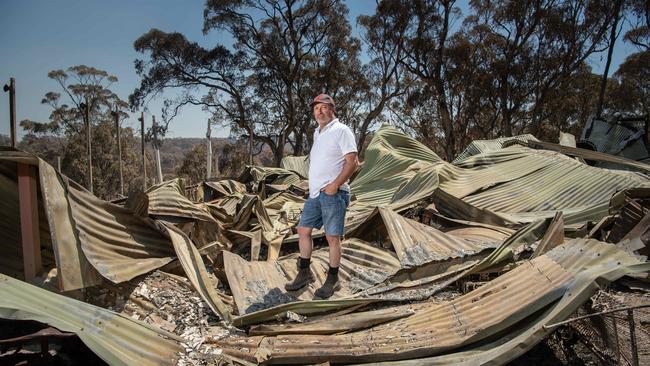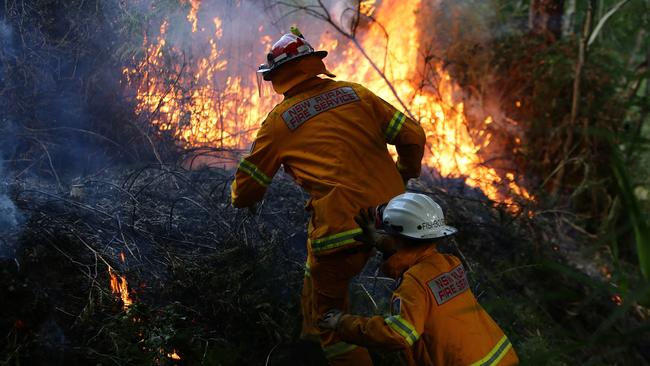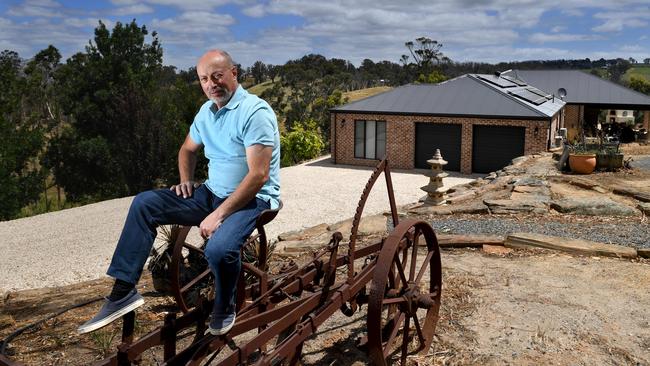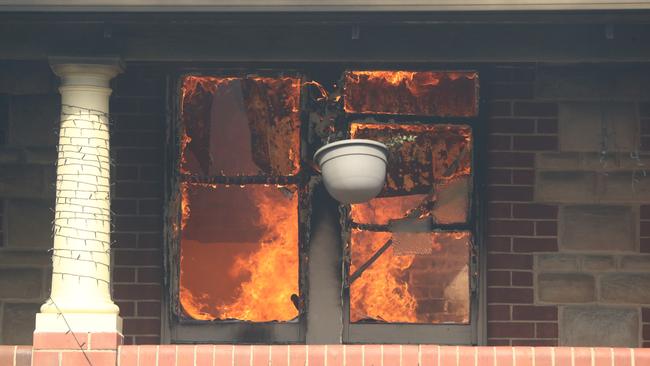RAA survey finds South Australians are increasingly worried about natural disasters – and want more spent on prevention
Just 3 per cent of all disaster funding in Australia is spent on prevention, and after the LA bushfires catastrophe most South Australians think that has to change.
SA News
Don't miss out on the headlines from SA News. Followed categories will be added to My News.
Increasing numbers of South Australians are concerned about the effects of natural disasters and believe government need to do more to reduce the devastating consequences of events such as bushfires and floods, according to a survey by the RAA.
The state’s largest member association has found that 80 per cent of South Australians are becoming more concerned about the increasing frequency of natural disasters and the potential impact on their homes and properties.
The survey also found 63 per cent of South Australians would support greater investment in disaster mitigation measures to protect homes and properties from natural disasters such as bushfires and floods.
RAA chief executive Nick Reade said high-profile disasters such as the fires in Los Angeles in which 28 people died and more than 15,000 structures were destroyed had heightened existing concerns.
“Even before the LA bushfires, eight in 10 of our members were already concerned about the impact of climate-related disasters on their homes,” Mr Reade said.

“With more extreme weather events, we’re seeing the risk to homes and properties increasing – and that’s putting real pressure on the affordability of insurance across the globe.’’
Mr Reade urged more spending on mitigation measures, including calling for an indexation of the federal government’s $200 million Disaster Ready Fund and updating building codes to make buildings more resilient. He also suggested revenue from the 11 per cent tax on general insurance products by used for mitigation measures.
“The Productivity Commission estimates 97 per cent of all disaster funding is spent on recovery and clean-up, leaving only 3 per cent invested into mitigation and resilience – we need to see a much greater balance in those figures,’’ he said.
The economic loss from the LA fires is likely between $400 billion and $450 billion.
A spokesman for the Insurance Council of Australia said only around $32 billion of those losses were insured but that it was possible it could push up insurance costs for Australians.
“Very significant events like these can push up the cost of reinsurance,’’ the spokesman said. “Reinsurance is insurance that local insurers like RAA buy from international providers to cover claims in the event of significant extreme weather losses, such as the 2022 River Murray floods that led to $425 million in claims.’’
“It is still too early to predict whether there will be implications for the cost of reinsurance from the LA wildfires, but reinsurers are already under pressure because of larger losses driven by more frequent and severe extreme weather hitting larger population centres.’’
Country Fire Service acting executive director of operations Alison May said the organisation desperately needed more resources to help prepare the state for bushfire threats, in particular new software to operate its fire modelling system.
“Our bushfire mapping is currently frozen, the software is out of date and it’s frozen,’’ she said. “South Australia is pretty much the only state that doesn’t have a modern fire risk mapping fire modelling capability.’’
The software can help determine whether it is safe to build in certain areas. The CFS has won a $1.8 million federal grant to develop the software and is waiting a response from the state government.

Ms May also said the CFS needed more resources to fulfil its role in offering advice in the development application process. The CFS has to sign off on buildings in high fire risk areas but has only three employees dedicated to the task at a time when there have been increases of up to 50 per cent in development applications.
A state government spokesman said a state bushfire management plan was already making SA “safer, better prepared and more bushfire resilient”.
“Improving the state’s capacity to manage bushfire risk through technology is one way to achieve this,” he said.
“The CFS advises 90 per cent of development applications are met within required time frames, with a statewide bushfire hazards overlay code amendment process underway to help meet future demand.
Emergency Management minister Jenny McAllister said the federal government was working closely with the insurance sector on delivering cost-of-living savings.
“We know that the climate is changing, and Australians can expect to experience more frequent and severe natural disasters,” she said.
“We are investing in community mitigation and resilience projects, as well as rating tools that bring down premiums, and have established the Hazard Insurance Partnership to work with insurers on disaster risk reduction and hazard insurance.”

Lessons learned from devastation
Even as the bushfire was roaring towards his Lobethal home, Enrico Sgarbi was thinking of lessons learned. The 2019 Cudlee Creek fires would eventually destroy his home and he fled with his wife and mother but he understood the importance of having a bushfire plan.
“We were numb from head to toe, we couldn’t think, and that was probably one of the most pivotal points in our life, realising just how important it was to have a plan, because if we don’t have a plan you don’t know what the hell to do,’’ Mr Sgarbi said.
Another lesson was the importance of being properly insured.
Mr Sgarbi’s reasoning is that if you are properly insured you are less likely to make a silly mistake and hang around to fight a battle you can never win.
“Because we were properly insured, we were able to leave our house and only focus on what our game plan of the day was, and that was to leave,’’ he said. “We weren’t going to be heroes and try to fight that sort of fire that was approaching because we didn’t need to.’’

Mr Sgarbi and his family didn’t have time to grab much. Passports, birth certificates, some jewellery and medicine.
The insurance helped rebuild the home and Mr Sgarbi, managing director of EnviroTemp, incorporated further measures of protection.
“There’s no wood around our house,’’ he said. “All the construction facing outwards is steel and brick. There’s no wooden eaves, there’s no wooden flashings or anything like that. There’s no verandas either.’’
There is also an extensive sprinkler system around the house.




